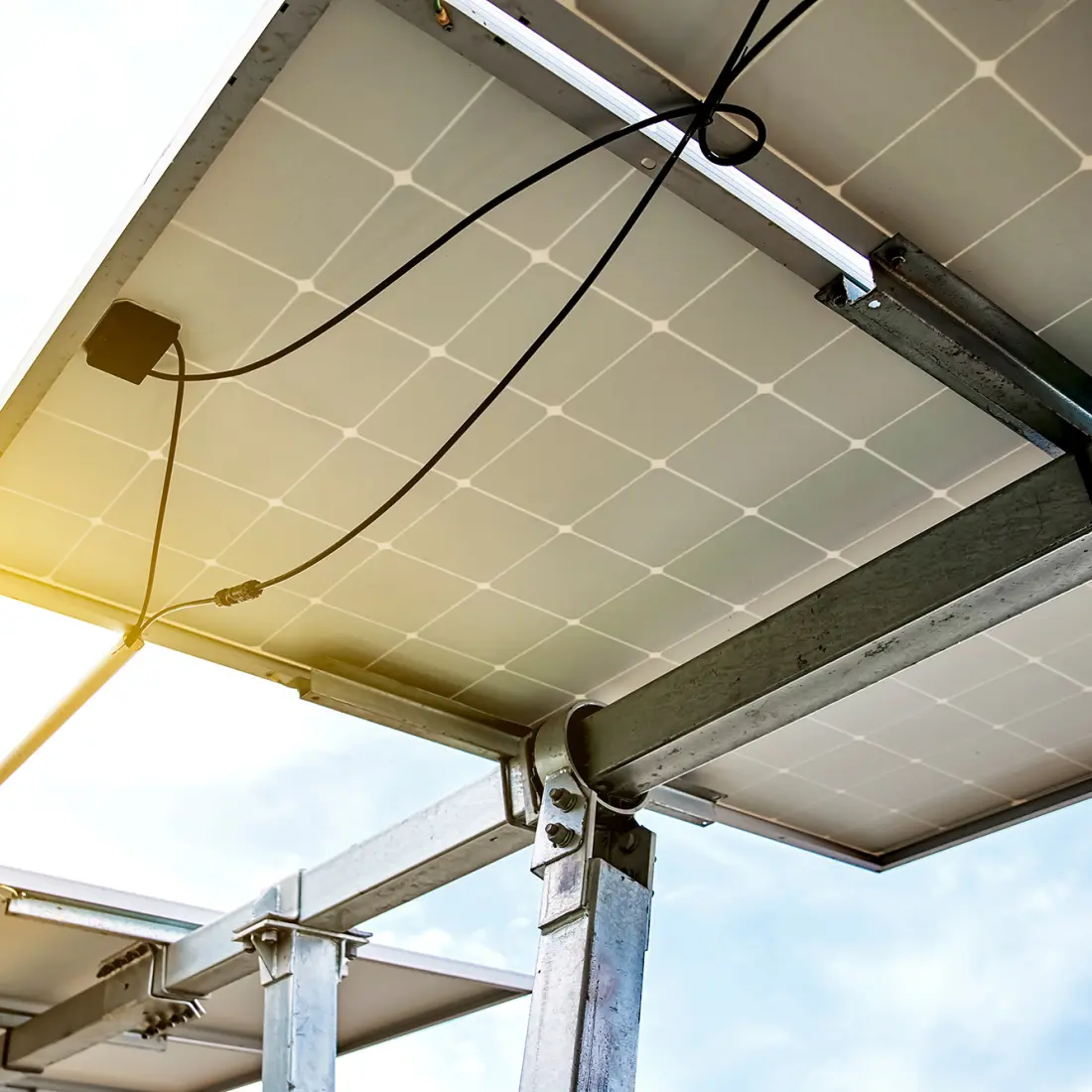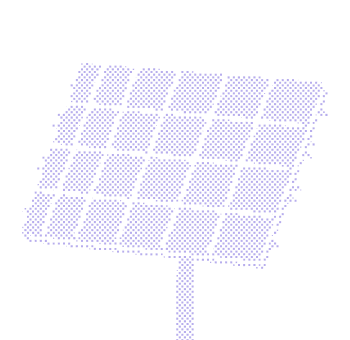Fixed tilt vs tracker system comparison for ground-mounted PV systems


Although solar trackers (single-axis and multi-row) are proven to increase the efficiency of PV systems, they have their disadvantages: higher upfront and maintenance costs, as well as specific project requirements make thorough consideration essential before purchasing them.
It’s not a secret that PV designers have to consider the long-term costs of all components in the PV installation. Everything from groundwork to cabling and even shading has to be considered before the work starts because any alterations to a large-scale project will cost both time and money.
Additionally, there’s the problem of upkeep; if the various components of the PV park are not considered beforehand, the maintenance costs could rise exponentially, making expenses outweigh any possible savings.
But with sufficient energy production as the goal of any PV system, one of the important elements of a PV project is choosing the appropriate structure for the solar modules. Trackers, essentially, can boost the overall efficiency of the park by tracking the sun’s movements, which increases the energy yield.
What are solar trackers?
Solar trackers are mechanical devices that orient the modules following the sun's movement to maximize sunlight capture. There are basically two types.
Single-axis trackers
As the name suggests, single-axis trackers move on one axis only; it can be east-west or north-south oriented. The trackers are usually automated, meaning the tracker has a structure in place that moves the panel based on the sun's direction, ensuring prolonged exposure to direct sunlight.
In general, a single-axis tracking system could be about 20% more efficient than a fixed-tilt system. Furthermore, single-axis trackers can be decentralized or centralized. Decentralized trackers work on a single PV module, while centralized ones can move the entire row. Single-axis trackers are commonly used in large-scale projects such as PV parks.
Multi-row trackers (most commonly dual-axis)
Dual trackers do much of the same as the single-axis ones, but they have one additional axis they can move on. This ensures the panel is always facing the sun, regardless of the direction it’s coming from. It’s worth noting that dual-axis trackers are more expensive than single-axis.
However, looking at a long-term investment, dual-axis trackers ensure the PV system produces more energy than other types of trackers. Dual-axis trackers are usually used in smaller-scale projects due to installation and maintenance costs; they also have a shorter lifespan than single-axis trackers.
When to consider solar trackers?
Despite the many advantages of solar trackers, they come at a cost. These are some of the factors that influence the decision of using (or not) trackers.
Limited space
If the PV project needs to be designed with limited space in mind, solar trackers could increase the efficiency and yield without requiring extensive alterations. For example, if the park relies only on a fixed-tilt system, it will need more space, and more groundwork, to place the modules to match the output of the one with solar trackers that can capitalize on the prolonged exposure to the sun.
Costs
When it comes to solar trackers, you need to consider short-term and long-term expenses and income. Panels with solar tracking will cost more than a fixed-tilt system both in terms of initial purchase and maintenance. However, they will generate more energy, which can outweigh the introductory costs.
Obstructions
Solar trackers can counter the shading issue, especially in locations where it’s impossible to remove the source of the shade. Trackers increase the efficiency of solar panels even in areas that are often cloudy.
Advantages of solar trackers
Solar trackers fully utilize the sun's peak hours and, in turn, increase the efficiency of the PV project. Trackers can overcome the shading problem and help to better utilize the land, which all adds to increased yield.
Trackers can make solar energy viable in locations that otherwise would be poorly suited for it. PV projects with solar trackers need fewer panels to be efficient and are more reliable compared to fixed-tilt.
Disadvantages of solar trackers
Trackers are expensive. When designing a project, you need to consider whether the subsequent yield will pay for the initial costs.
Not all projects can support the trackers. For example, residential PV systems will not benefit from the trackers as much as solar parks.
Maintenance of solar trackers costs more than that of a regular system. According to experts, trackers are especially susceptible to weather conditions, so the local climate can become a limiting factor for the PV project.
When to consider fixed-tilt systems?
While solar tracking can increase the efficiency of a PV system, it’s not always viable. For instance, if the site of the PV project is on undulating terrain, specialists need to evaluate the geotechnical conditions and decide if the project would benefit from the trackers or if the fixed-tilt is a better fit.
The same goes when the parcel is on steep slopes, there’s limited space for panel movement, or when there are obstacles that cannot be removed. A mix of fixed tilt and tracker systems could provide a solution, but overall, any PV project needs to be studied individually to determine which system to use.
Developing PV systems on challenging sites requires a specialized approach beyond ground-mounted structures, but choosing between fixed-tilt and trackers can be a determining factor anyway.
Conclusion: which trackers should you choose?
When deciding what system to use, you should consider variables that are unique to your project. Solar trackers are more susceptible to weather-related events, which increases the maintenance costs, so they work best in regions with sufficient irradiation; and while the same goes for fixed-tilt, the tracker system can be more efficient with less land availability.
On the other hand, in locales that are cloudy, fixed-tilt systems might be less efficient than trackers because they maximize energy production.
Overall project costs also need to be considered. Trackers are expensive, dual-axis ones even more so, but if the PV project can financially benefit from the increased energy generation long-term, it might be a worthwhile investment.
To that end, learning how to calculate beforehand the expected energy output of a solar plant based on factors such as site, performance, and, of course, ground mount structure is essential.
Alternatively, if you’re designing a smaller scale project, fixed-tilt might be a better fit, as it has lower construction and maintenance costs.
How can PVcase help?
PVcase Ground Mount enables you to design a project with both fixed-tilt and single-axis tracker systems. The automated features assist with the placement of the trackers, their alignment, and the calculations involved, providing designers with a clear view of the park’s potential performance.
To further increase efficiency, PVcase Ground Mount allows you to change the azimuth for the tracker layouts on single-axis and fixed-tilt systems. The software automation also covers additional elements, such as the placement of inverters, to ensure the efficiency of the PV park. Regardless if you’re working with fixed-tilt or trackers, PVcase Ground Mount can aid with the cabling, stringing, shading, or any other.


Try PVcase now
See our AutoCAD-based solar design software in action and learn how it can benefit your business. PVcase leverages automation, a high level of precision, and intelligent algorithms to improve the efficiency, accuracy, and quality of PV designs.


